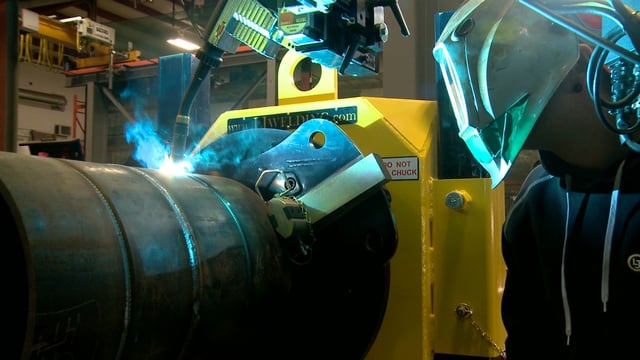
When considering welding or manufacturing on the whole, "automation" can refer to some or every action performed within a sequence or process by an mechanical or electrical means. Certain functions can be manually performed (semi-automation); or full automation, an operator does not need to make any adjustments at all (full automation). Automated welding has been applied to a countless number of processes. Equipment may accommodate a single assembly/sub-assemblies (fixed automation), or it could be flexible enough to become quickly modified to execute similar operations with different components in addition to assemblies (flexible/full or robotic automation).
Whatever the degree of welding automation, the objective is to:
- Reduce manufacturing costs by increasing production,
- Minimize consumable and labour waste (efficiency)
- Enhance quality
- Improve the overall process reliability.
The reality is that automated welding can fail or succeed depending on how it's being applied. In order to successfully employ automated welding to your application, it requires careful planning. This means that the product, plant, workflow and equipment costs should be analysed before-hand to determine if it is a feasible option to achieve your production goals. Time studies can be analysed, and using an equipment rental program such as LJ's, different equipment can be tested to ensure the best ROI before a major capital expenditure.
The 4 Main Factors Which Govern The Need For Automated Welding:
Production Quality - better process control, product improvements, data collection and reducing waste are all possible.
Production Throughput - higher output and improving inventory turn-over are often considered the most significant advantages.
Human Capital - automation may allow the welder to work outside a hazardous environment (higher level HSE), and it may be possible to use more economical semi-skilled labour for operation; however education and training of operator personnel would be required to make optimal use of an automated system for welding.
Investment - the costs and savings that result from automated welding systems need to be identified and must include cost/availability of capital and proper ROI analysis.
The importance ranking of the factors will vary with the type of industry and your application, and each needs to be looked over. Below are some before and after case study examples our customers have allowed us to share with you. We hope they will offer you some inspiration for enhancing your production schedule:
Topics: Productivity, Research & Development






